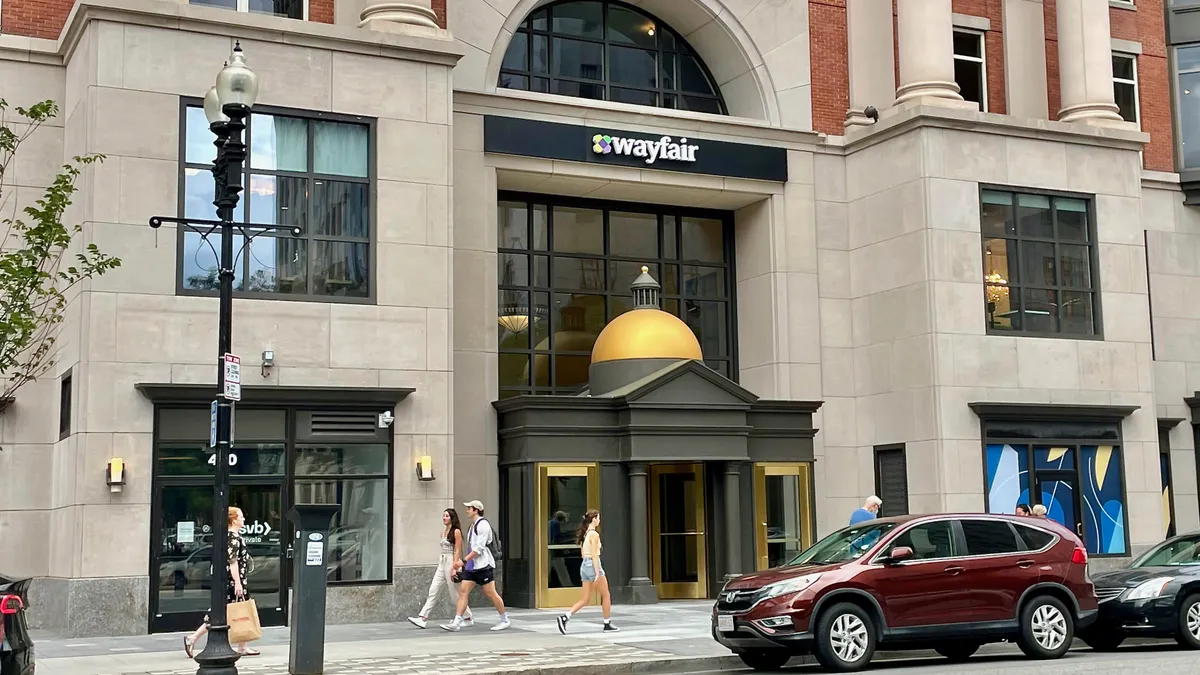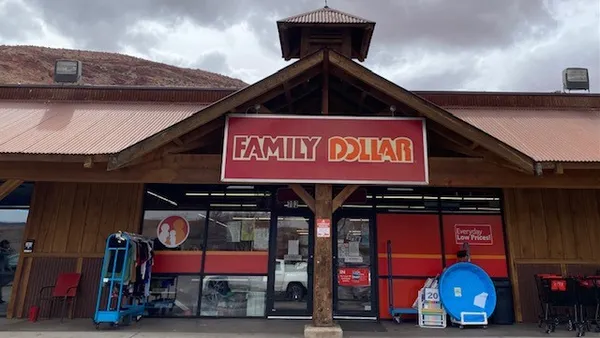Dive Brief:
- Wayfair has lowered its last-mile costs by improving data analytics tools it uses to determine if a product should be delivered by its in-house network or through a third party carrier, CEO, co-founder and co-chairman Niraj Shah said on a May 4 earnings call.
- Wayfair classifies the items it sells as either small or large parcels. Small parcels are shipped through carriers like FedEx and weigh 30 pounds on average. More expensive, large parcels are fulfilled through Wayfair's own network via trucks staffed by two-person teams.
- "For some items, large parcel clearly makes sense," Shah said. "The higher cost of delivery is more than offset by the reduced damage rates from the extra care. In other cases, we may see that shipping times and damage rates are indifferent, in which case classifying the item as a small parcel creates a more compelling retail price while preserving the customer experience."
Dive Insight:
Better data analytics is helping Wayfair figure out the most effective way to deliver items that straddle the line between its small and large parcel categories, saving last mile delivery costs in the process.
It's just one piece of the online furniture retailer's $500 million operational cost reduction effort amid a drop in net revenue, active customers and orders delivered. Full realization of these cost savings are expected by late 2023, the company announced in January.
"These are durable process-oriented savings that we expect will create improved economics and efficiency on every single order placed and which we believe will lead to higher savings when the volume growth returns," Shah said.
Another area that Wayfair is improving through its cost-cutting plan is product damage rates. It has worked with suppliers to identify product weak points and improve packaging to more effectively prevent damage, Shah said. The company also uses damage rates data "to compose better search results for shoppers," he added. This has helped Wayfair drive its overall incidence rate down by more than 15% since last summer.
"By prioritizing items that we know consistently delayed our shoppers, we create a better experience, save on after-order service expenses and drive a much higher likelihood of generating a repeat order in the future," Shah said.















